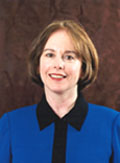ASEE has a wealth of strength
in the breadth of its members’ knowledge and skills. We have individual and
institutional membership in academia, large and small technology-based corporations,
and in government agencies. This fantastic membership base constitutes an
organization with the knowledge and the need to identify and put in place
educational practices best tailored to the many specific requirements within
our expansive educational universe – which ranges through kindergarten and
middle school to high school and into community colleges, four-year colleges,
research universities, and corporate learning centers. By providing increasingly
effective mechanisms for dialog across our membership, we will catalyze new
initiatives that enhance engineering and engineering technology, in both education
and practice. These enhancements will benefit us and attract new members.
As we continue and expand on our successes, we must remain authentic agents
of effective change, helping each other to gain the resources and encouragement
we need to keep our profession responsive to the increasingly broad demands
of our global society. ASEE is our shared laboratory for developing our classrooms,
our public service initiatives, and the engineering workplace.
Engineering is a global activity
of critical importance to the success of all societies. Today’s students and
professionals will increasingly work with and for engineers in many other
cultures. Global teams now design new systems collaboratively, and this diversity
of perspective has a great positive impact on the quality and utility of our
products. ASEE must provide leadership in this globalization of our field.
While still focused on representing the engineering community in the United
States and Canada, ASEE is engaged in carefully selected initiatives, including
sponsorship of an annual international conference and our new global on-line
memberships, to foster joint activities with our colleagues in other parts
of the world. Our membership will benefit from collaboration with education
and industry leaders from other cultures, and gain fresh perspectives and
ideas. These exchanges will make ASEE members better able to guide the preparation
of the next generation of technological contributors.
Given the critical importance
of our professions, it is surprising that the general public often misunderstands
engineering and engineering technology, both as careers and professions. Most
young students, if they know of our professions at all, do not understand
what we do. By the time they discover that we design, invent, build, and can
delight in solving difficult problems, many have missed the opportunity to
take the math and science pre-requisites they need to further their education.
If we are to educate those who will capitalize on technological opportunities
of the future, we must improve our efforts to provide educational access to
our profession as early as possible within K-12 education. ASEE has several
well-designed and well-coordinated initiatives in this arena. In addition,
many of ASEE’s institutional members and other national organizations have
successful efforts underway. The appreciation of the need for stimulating
interest early is widely shared, and we are beginning to discover some strategies
for implementing effective programs. Still, the efficient coordination of
these efforts remains a goal. The time is now ripe for working together on
this critical challenge. This important objective deserves further emphasis.
Finally, if we can continue and
expand our progress on the above three initiatives – communication across
constituencies, collaboration across national boundaries, and cultivation
of early interest in engineering and engineering technology – we can make
progress on the fourth: creating greater opportunities within our profession
for traditionally underrepresented groups. Opening our thinking and perspective
to a greater and more representative population will foster creativity, an
essential component of our profession. Innovation and creativity are natural
outcomes of work within a diverse community. Given the demands of a smaller
world, with greater communication in all forms, engineers must learn to work
with individuals unlike themselves. Understanding and welcoming diversity
is an imperative for us and for those we mentor and educate.
I am qualified and eager to serve
ASEE to accomplish these goals and further increase the stature and value
of our organization. I have devoted my career to improving engineering education
and expanding opportunities for engineering careers. I have held elected leadership
positions within ASEE, most recently as First V.P., and in IEEE. I have worked
as a faculty member, in a government laboratory and as an academic administrator.
I have been a volunteer to ABET for 9 years, working with both engineering
and engineering technology accreditation issues, and have led engineering
accreditation teams to numerous institutions. Currently, I am helping to pioneer
a new approach to engineering education as a member of the leadership team
at Olin College, which aims to create a new model for education and intellectual
vitality in the study of and preparation for our profession.
I look forward to serving you
and the membership of ASEE to accomplish its goals. I thank you for your thoughtful
consideration of what is best for ASEE. Whatever you decide, you have honored
me through this nomination.
